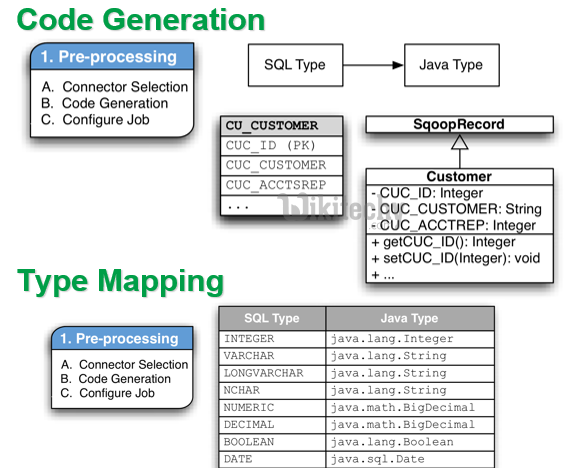Specify Generated Value Of Composite Primary Keys In Jpa

Mar 06, 2017 If a database table has more than one column as the primary key then we call it as composite primary key.In this Hibernate Composite Primary Key tutorial, we will learn how to define Composite Primary Key using tag and Annotations. Hibernate Composite Primary Key Tutorial Creating table. Create EMPLOYEE Table, simply Copy and Paste the following SQL query in the. As an object database, ObjectDB supports implicit object IDs, so an explicitly defined primary key is not required. But ObjectDB also supports explicit standard JPA primary keys, including composite primary keys and automatic sequential value generation. This is a very powerful feature of ObjectDB that is absent from other object oriented. In this article, we’ll learn how to use Composite Primary Key and the corresponding annotations in JPA. A composite primary key is formed by the combination of two or more java types and it is mapped to corresponding columns in the database. Dec 07, 2019 A composite primary key – also called a composite key – is a combination of two or more columns to form a primary key for a table. In JPA, we have two options to define the composite keys: The @IdClass and @EmbeddedId annotations. Simple vs Composite primary keys. A simple primary key consists of a single Java field in JPA Entity that maps to a single table column. On the contrary, A composite primary key consists of multiple Java fields which individually map to separate columns.
Created 3 JPA annotated classes:
User:
Device:
Token:
Am trying to set up ER relationships in Hibernate 3 / JPA (or even in MySQL 5) like this:
User has one to many Devices.
User.userid (Primary Key)
Device.id (Primary Key)
Device has one to one relationship with Token.
Device.id (Primary Key)
Token.id (Primary Key)
Question(s):
(1) How do I set these up in Hibernate3 or MySQL5 code?
(2) Am very new with SQL so would it be that the Device.id is the foreign key of User.userid and vice versa with Device and Token?
Am very new to Hibernate 3 / JPA so would appreciate it if someone could help..
Thank you and happy programming!
Dec 13, 2018 This post we will learn about dealing with Composite Keys with @EmbeddedId in Spring Data & JPA.We will see how we can define a table with composite key, specify the keys and see an example of putting an entry into the table and finding with the help of Composite key. I explain the primary key generation strategies and their performance impacts in more detail in How to generate primary keys with JPA and Hibernate. The @Enumerated annotation enables you to define how an enum attribute gets persisted in the database. By default, all JPA implementations map the ordinal value of the enum to a.
2019-11-8 While using Jenkins (a software development tool), I need to generate ssh-keygen -t rsa with using Jenkin Credentials instead of default system credentials. I think we need to use runas command to login as Jenkin user so that we can generate ssh-keygen -t rsa.But I cannot able to do. Can anyone tell me how to proceed further? Jenkins generate ssh key windows.
 posted 10 years agoSo, you'll need instance variables:
posted 10 years agoSo, you'll need instance variables: User has one to many Devices. Ubunut generate ssh key for user.
So, the User class will has a List of devices, List devices = new ArrayList(); Put in setters and getters. Device will have an instance of a User. Then add your JPA annotations like usual.
Device has one to one relationship with Token.
Add instance variables - Devices has an instance of a Token, and a Token has an instance of a Device. Then perform the annotation mapping as usual with any one-to-one association.
Here's a good tutorial on mapping one-to-one relations with Hibernate and JPA:
Mapping Associations with the Java Persistence API
There's a discussion of one-to-many mappings on that site as well.
Keep asking questions, and let us know how you're getting along, including code snippets and any errors you have.
-Cameron McKenzie
Specify Generated Value Of Composite Primary Keys In Jpa History
posted 10 years agoYes, I checked out the tutorial and got my code working!
The tutorial does throw an exception however..
Created my tables like this:
Exam:
ExamDetail:
ExamApp:
When you run ExamApp this is what happens:
Question(s):
(1) In the CreateExam.sql query, you stated to place this:
KEY FK2FB81FB83A97F5 (detail_id),
CONSTRAINT FK2FB81FB83A97F5
What is the FK2FB81FB83A97F5 for and where do I create values like this for my own foreign keys?
(2) What is causing the exception?
Thank you for everything!
-James
Creating a HibernateUtil Class
-Cameron McKenzie
Foreign Keys
Thank you for your help! You stated these fields in your tutorial:
KEY FK2FB81FB83A97F5 (detail_id),
CONSTRAINT FK2FB81FB83A97F5
What is the FK2FB81FB83A97F5 for and where do I create values like this for my own foreign keys?
-James
Creating Tables with the SchemaExport create
-Cameron McKenzie
-James
-Cameron McKenzie